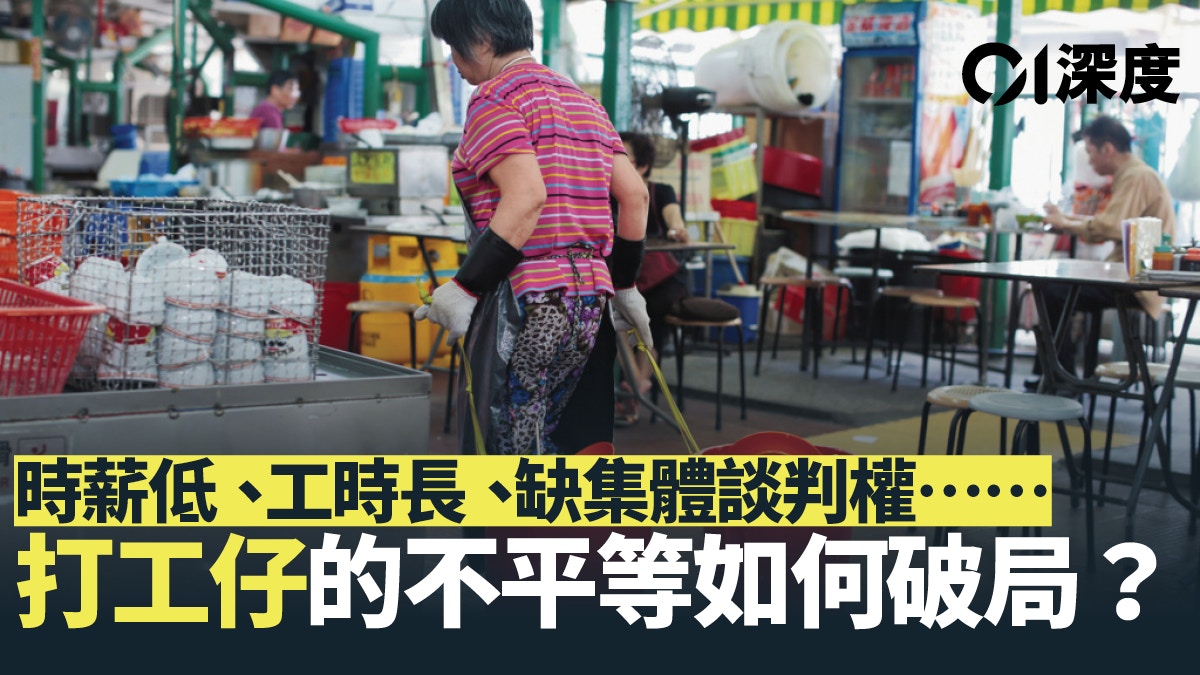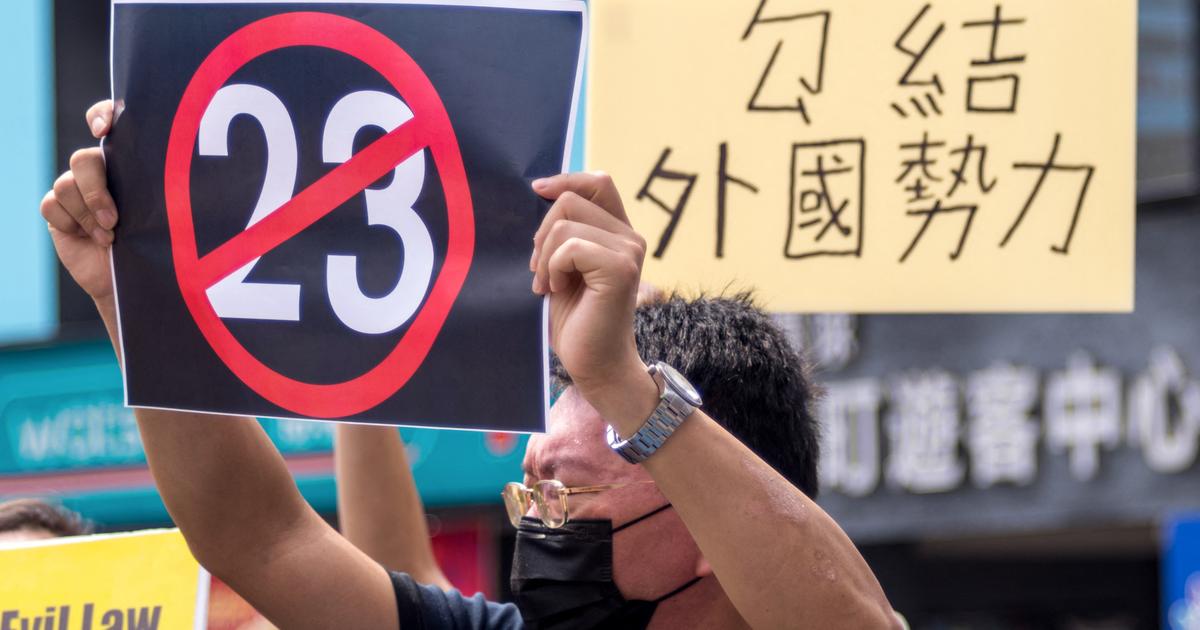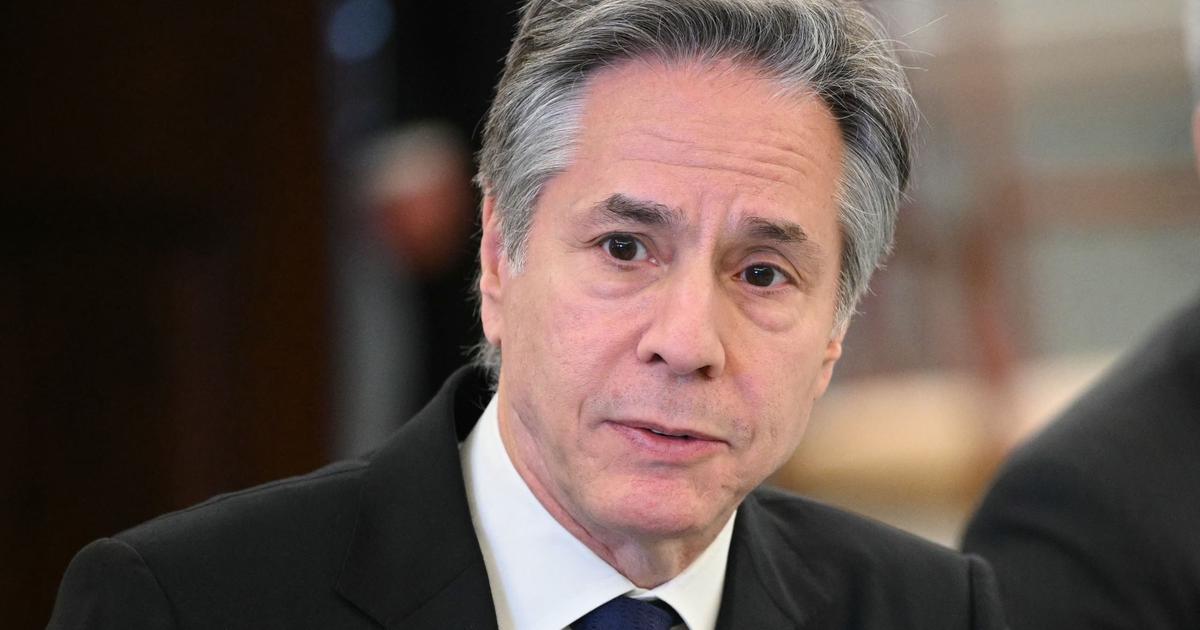The 2022 Employment Support Scheme closed earlier (May 12) for applications. The SAR government received a total of 176,000 applications from employers, involving 1.66 million employees and 119,000 self-employed people.
In 2020, the authorities spent 81 billion yuan of public funds to launch two tranches of employment guarantees to provide wage subsidies for eligible employers, and this year they will add another 39 billion yuan.
It is undeniable that the plan can relieve the pressure of some enterprises, but it is not ideal for labor protection. Even if the policy is revised and updated twice, it still cannot fill the loophole for unscrupulous employers to benefit from this. In the final analysis, the problem is that The working class has always lacked bargaining power, and the SAR government tends to obey the arrangements of management.
Regarding this structural predicament of "capital and labor, weak", has the Chief Executive-designate, Li Jiachao, who promised to lead Hong Kong's renovation chapter, has solved the problem and found a new balance?
There are at least five loopholes in the employment guarantee plan, which makes it difficult to protect grassroots workers from being exploited.
(file picture)
It is difficult for employers to protect labor rights and interests
After the outbreak of the new crown virus in 2020, the SAR government followed the example of Europe, the United States and Singapore, and spent 81 billion yuan to launch the "employment protection" plan - the first subsidy is used to pay employees' wages from June to August, and the second It is used to pay employees' wages from September to November, benefiting about 160,000 employers and nearly 2 million employees.
In that year, Hong Kong experienced four waves of epidemics, and the epidemic prevention measures were loose and tight, and economic activities were inevitably restricted. For many enterprises, "employment protection" was indeed like "timely rain".
When the Secretary for Labour and Welfare, Law Chi-kwong, summed up the effectiveness of the plan in his blog in March this year, he cited two sets of data to illustrate the role of "employment protection": First, the third wave of the epidemic occurred from July to August 2020, at the time of the During the first subsidy period, the unemployment rate was maintained between 6.1% and 6.3% without deterioration; secondly, the fourth wave of the epidemic appeared in November 2020. Without subsidies, the unemployment rate soared in the next three months. It fell to 3.9% in April 2021 after the epidemic slowed down, a rapid decrease of 3.3 percentage points, and the rebound rate was three times that of the SARS epidemic in 2003. It can be seen that the plan will help enterprises retain their strength, and when the epidemic subsides rebounded quickly.
However, the "employment protection" scheme is not seamless, and there are many loopholes that allow unscrupulous employers to benefit, but disadvantaged employees are not fully benefited.
After the launch of the first issue, "Hong Kong 01" has sorted out at least five loopholes: First, the plan requires employers not to lay off employees after receiving subsidies, but employers can "do the math by laying off old employees and hiring new employees with lower salaries". ” to show “no layoffs”, and earn the difference between the salary of new and old employees; secondly, the human resources of the enterprise are in the hands of the top management, employees may not know whether the company violates the regulations, and the supervision mechanism is better than nothing; thirdly, a considerable number of employees are required by the company. Long-term unpaid leave is equivalent to unemployment; Fourth, the amount of subsidy received by the enterprise is only calculated based on the number of employees and salaries in the specified month. If the employee is reduced in salary, it will not affect the subsidy received by the enterprise; Fifth, only the specified amount is calculated The number of employees hired by the company in the month, the company can hire relatives and friends to fill up the number to pocket funds for profit.
Many underemployment problems arise as a result.
In September of that year, before the plan was fully completed, the Trade Unions Union received more than 400 complaints, 80% of which involved unpaid leave and labor reduction.
According to the Census and Statistics Department, the seasonally adjusted unemployment rate from July to September of the same year was 6.4%, the highest in the past 16 years, highlighting the plight of wage earners who have been exploited at various levels.
It can be said that the plan has indeed helped and supported enterprises, but it has not fully taken into account the hardships faced by grassroots workers and their families during the epidemic.
As for the "2022 Employment Support" plan, even if it has been improved, it has not completely eliminated the hidden danger that workers cannot benefit.
For example, Ho Pei-ling, director of the Policy Innovation and Coordination Office, said that employers need to promise to pay full subsidies to pay wages, hire enough employees, and use the MPF to reflect the employment situation, so as to eliminate the problem of fat and thin; however, the authorities have not adopted the real-name system.
Shi Lishan pointed out that although the omissions of this round of employment guarantee plan have been reduced and labor protection can be increased to a certain extent, employers may still lay off old employees and hire lower-paid employees to "do the numbers" to enrich their own pockets.
Shi Lishan, deputy director of the social association, said that there are still omissions in this round of employment guarantee plans.
(File photo/Photo by He Jiada)
Finding a new balance of labor relations can break the situation
The lack of job security is just the tip of the iceberg of Hong Kong's labor problems.
Shi Lishan said that the business community, as an important stakeholder in Hong Kong society, has considerable voting rights in major elections and parliaments, has high bargaining power in the face of the government, and has absolute bargaining power in employment relations.
The resulting structure of "strong capital and weak labor" is the key to the lack of labor rights and interests in Hong Kong.
From a legislative perspective, the Employment Ordinance has not fundamentally empowered the majority of workers, and over the years there has been no major review, only minor repairs.
For example, in the fifth wave of the epidemic that just passed, the government adopted measures to control the spread of the virus, such as quarantine, forced quarantine, and so on. As a result, a large number of wage earners were deducted from their wages, forced to take unpaid leave or paid annual leave because they were unable to go to work. They were even fired, causing many labor disputes.
At the end of February this year, the authorities submitted the Employment (Amendment) Bill 2022, which stipulates that if an employee is absent from work due to compulsory testing or isolation, it is considered sick leave, and it is unreasonable for an employer to dismiss the employee; Dismissal is not unreasonable dismissal for refusing vaccinations for good medical reasons.
"What does this improve? It's obviously causing more inequality!" Shi Lishan observed that many grassroots people failed to get vaccinated due to physical considerations, but because doctors avoided responsibility and were reluctant to issue certificates, they were forced to lose their jobs.
From the perspective of system design, wage earners are repeatedly oppressed and face many injustices.
For example, the minimum wage level is seriously low and is only reviewed every two years.
Hong Kong only implemented the statutory minimum wage on May 1, 2011, and the current level is frozen at 37.5 yuan per hour determined in 2019, making it difficult to guarantee the basic quality of life of workers.
At the end of last year, some trade unions advocated changing the "every two-year inspection" to "annual inspection" in order to catch up with inflation and afford the basics of firewood, rice, oil, and salt.
However, as always, the initiative was opposed by the business community on the grounds that it was "unaffordable".
In addition, Oxfam published a research report in 2018, advocating that the hourly wage be raised to a "living wage" of 54.7 yuan, but it was also coldly treated by the business community, and nothing was left.
Another example is that the working hours are too long, but the standard working hours have not been legislated for a long time.
The Census and Statistics Department has released the "Quarterly Report on General Household Survey", indicating that the average weekly working hours of Hong Kong people is 44 hours. 52 hours, the longest in the world.
However, the government has not taken seriously the problem of overwork among Hong Kong people, and has not even defined "karoshi". It also pointed out that a large proportion of non-accidental sudden deaths of employees during work involve heart and brain diseases. Questions about whether some cases are related to overwork.
Another example is that occupational safety and health has not been fully guaranteed, the hedging mechanism of the MPF has been discussed for nearly 30 years before it is willing to abolish, and the efficiency of review and revision of the Employment Ordinance is always lagging behind... The list goes on and on. .
Shi Lishan hopes that the new Chief Executive, Li Jiachao, will face up to the shortcomings of labor rights and interests such as job poverty and start to fundamentally improve the relationship between the "capital and the weak".
One of the important directions is to re-establish the "right to collective bargaining" - that is, the labor collectively negotiates remuneration and treatment with the management through the labor union. The management must recognize the status of the labor union, and the negotiation results are also legally binding.
As early as before and after the handover, Hong Kong had the right to collective bargaining. One month before the handover, the then Legislative Council Member, Mr. Lee Cheuk-yan, proposed the "Employees' Representation, Consultation and Collective Bargaining Ordinance" in the form of a private bill, and it was passed; Weeks later, the ordinance was frozen by the newly formed Provisional Legislative Council and repealed in October of the same year, only in existence for just over three months.
Today, the lack of collective bargaining rights has resulted in an unequal labor-management relationship, making it difficult to fully protect the rights and interests of migrant workers.




/cloudfront-eu-central-1.images.arcpublishing.com/prisa/3I74UEXLYRBBRPGPSGWNN6WXH4.jpg)




/cloudfront-eu-central-1.images.arcpublishing.com/prisa/KMEYMJKESBAZBE4MRBAM4TGHIQ.jpg)



